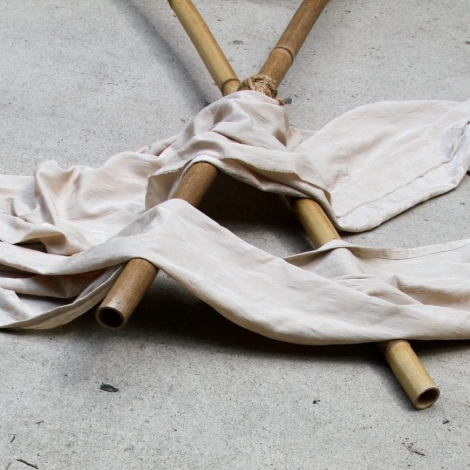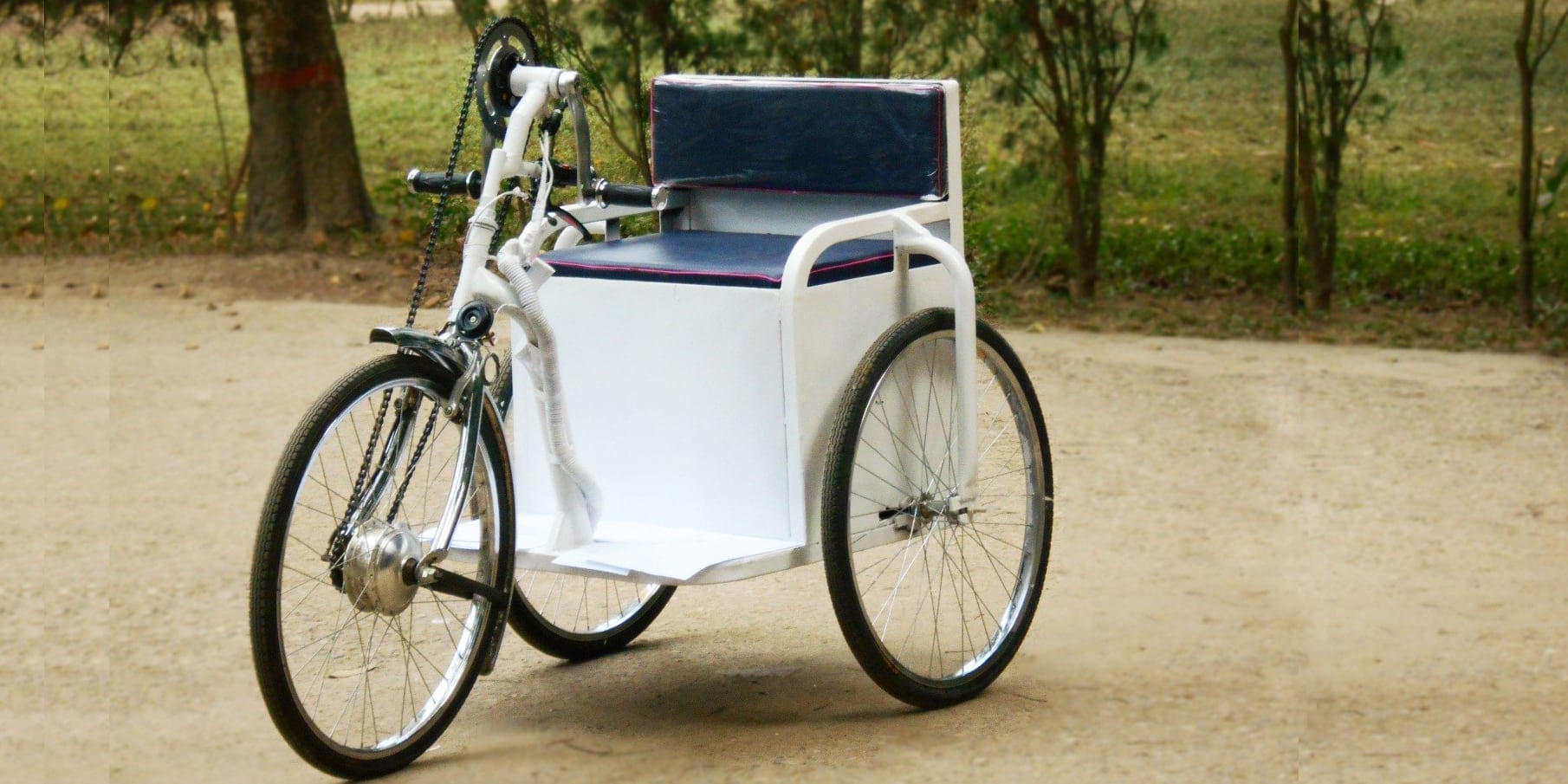At age 15, Alexis Lewis has designed and patented a bamboo rescue travois, applied for a patent for an Emergency Mask Pod to deliver safety gear to people caught in burning buildings, and she has designs on paper for a plasma rocket, a shaped charge and a railgun power source. The award-winning inventor has advice for other young people and for schools: Inventing should be part of the grade-school curriculum.
When she was 12-years-old, Alexis Lewis upgraded the travois, which is a kind of triangular stretcher, a wheel-less cart that is traditionally dragged along the ground. She gave her prototype wheels and a lightweight aluminum frame so that it could be shipped or even air dropped to refugee families. The year was 2012 and Lewis figured that Somali refugees escaping the drought and famine in their hometowns could use the machine to carry their kids and belongings on the long trek to the refugee camps. She designed, prototyped and tested the travois, then sought expert advice for improvements, doing the work that college engineering students 10 years her senior engage in. And she hasn’t stopped.
In the three years since we covered the travois upgrade, Lewis (formerly Chase Lewis) has fielded advice from three engineers (one of whom is her grandfather) and global development experts. In 2013, the “Rescue Travois” won the Spark! Lab Invent It Challenge. It caught the attention of Meg Wirth, CEO of Maternova, a distributor of maternal health technology in developing countries.
[See Wirth in our webinar, Innovations in Global Maternal Health.]
“She told me that the Rescue Travois was needed in remote, rural parts of Africa to help the sick and women in delivery distress reach doctors in bigger villages,” Lewis told E4C. “Other health professionals who have been in Africa have told me that the travois-on-wheels is needed for this purpose.”
Following the principles for design in emerging economies, she swapped out all of the parts of the prototype for materials that can be found locally in Sub-Saharan Africa. The aluminum struts are now bamboo poles, the parachute cloth platform is now a rope mesh and the axle is held in place with concrete.
Lewis received a patent for the invention in 2015, as well as a write-up in the US Patent and Trademark Office’s Inventor’s Eye newsletter. In June, the Smithsonian Museum of American History placed a photo of Lewis and the travois in a new exhibit. And the Smithsonian Magazine profiled her, her work on the travois and other projects she’s developing. She’s now arranging field-testing trials with organizations working in Sub-Saharan Africa.
The Emergency Mask Pod
Lewis’ next invention was the Emergency Mask Pod, an American football-shaped container that stores a smoke mask, goggles and an LED stick.
In a research paper she wrote on the EMP, Lewis explains that 40 percent of the 2500 people who die in fires each year in the United States succumb to smoke inhalation before they can be rescued. The EMP is her answer.
“When a first responder arrives at the scene, and sees someone stuck on the second floor, he would tell them to open their window and that he will throw a smoke mask up to them,” Lewis says.
Before settling on the football, Lewis tested an interesting set of ideas, from a tennis ball canister shot out of a pneumatic t-shirt cannon to a hand-thrown aerosol “stick grenade” that clears smoke, inspired by the early 20th century German weapon. The football gave the best performance after hours of testing with volunteer firemen.
“The EM Pod would be particularly useful in rural areas supported by fire departments relying 100% on volunteers. In these cases, a civilian firefighter is likely to arrive at the scene of the fire before the fire engine,” Lewis says.
Inventing 101
Lewis has designs for a portable railgun power source, a plasma rocket and a shaped charge, none of which she can prototype or test without funds and laboratory access. For those, she is resigned to wait until she is in graduate school, she says. But she believes that inventing should begin in grade school. She lays out her case for Inventing 101 courses in this TEDxUNC talk earlier this year.
And to other young people aspiring to make great things, Lewis has this advice: “Making your idea is the easy part, and it’s probably the part you are going to like. Once you have a working invention, unless you have astronomically great luck, you will almost certainly have to do a lot of legwork to get it off the ground.”

